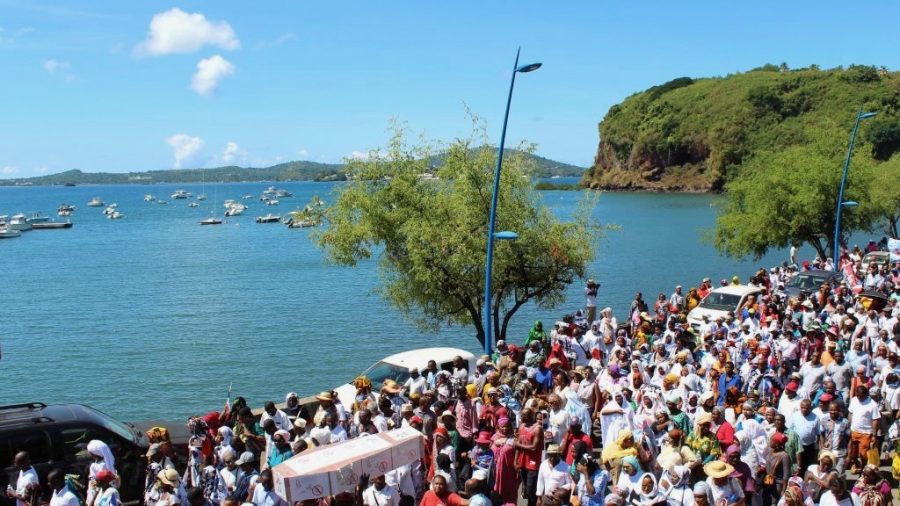Scientists have traced back seismic activity felt up to 10,000 miles from its origin to an underwater mega-volcano.
Last year a series of earthquakes shook the French island of Mayotte, located in the Indian Ocean between Mozambique on the African mainland and Madagascar, Science reported.
Around the middle of 2018 onward, residents of Mayotte felt minor earthquakes on a daily basis, Laure Fallou, a sociologist with the European-Mediterranean Seismological Center in Bruyères-le-Châtel, France, told Science. She said residents didn’t know what was happening, were losing sleep, and needed answers.
Last year, thousands of earthquakes rattled the tiny island of Mayotte, while a low-frequency rumble rippled around the world—ringing sensors nearly 11,000 miles away. Now researchers may know why. https://t.co/yQAMhkDuJA
— National Geographic Magazine (@NatGeoMag) May 21, 2019
Then a 5.8 magnitude earthquake struck on May 15, the largest ever recorded in the region, National Geographic reported. A low frequency rumble was also picked up by sensors over 10,000 miles away.
The constant seismic activity caused Mayotte to sink by 13 centimeters (5.1 inches) and shift 10 centimeters (4 inches) to the east in the past year, according to Science.
Scientists investigating the area eventually discovered the source of the mysterious seismic activity: The birth of an underwater “submarine volcano,” the largest ever discovered.
“This thing was built from zero in six months!” Marc Chaussidon, director of the Institute of Geophysics in Paris, told Science.
Teams of scientists placed seismometers on the ocean floor and detected seismic activity 20 to 50 kilometers (12 to 31 miles) deep into the Earth’s crust. Scientific instruments detected that as much as 5 cubic kilometers (1.2 cubic miles) of magma were released onto the sea floor when the volcano erupted.
Α geological mystery seems to be developing at the sea floor near the French island of Mayotte.
According to this article of @sciencemagazine : https://t.co/jxJn0WPuuN, an 800-meter-tall volcano has been formed there within the last six months causing worries about its activity >— MarineTraffic (@MarineTraffic) May 22, 2019
Scientists pulled up some of the hot volcanic rocks and brought them aboard their ship.
“They were popping as we brought them on board,” Nathalie Feuillet, leader of an expedition to the site of the seismic activity, told Science.
Scientists are trying to figure out what caused the underwater eruption, Science reported. The volcano nearest to Mayotte last erupted 7,000 years ago. The recent seismic activity continues to pester the island, and people are worried about a possible tsunami triggered from within the sea.
The volcano is just 31 miles off Mayotte’s eastern coast. It has risen nearly a half mile above the sea floor, and is 3.1 miles long, Live Science reported.
Short bursts of seismic activity were picked up by seismic sensors up to 10,000 miles away from the location of the ‘submarine volcano’ near the French Island of Mayotte. ✌ ???? #BigBlueOceanCleanup https://t.co/byaXrhHRNh
— Big Blue Ocean Cleanup (@bigbluecleanup) May 24, 2019
Mayotte consists of the two most southeastern islands of the Comoros archipelago, according to Encyclopedia Britannica. Mayotte has about 264,900 residents and is considered an overseas department of France, a status it took on in 2011. It used to be considered a territorial collectivity of France, which is partway between an overseas territory and what France calls an overseas department.
France’s Ministry of Ecological and Solidarity Transition published a press release on the underwater volcano finding, indicating that there will be more to reveal after further study.
“Scientists are mobilized to process, analyze, and interpret the wealth of data acquired in recent months. This operation will require extensive work to assess the risks induced for Mayotte in terms of seismic risk, volcanic risk, and tsunami. The study program will then be updated and strengthened in the light of the new knowledge provided by these in-depth analyzes.”
Feuillet is looking to keep her team out on the water to continue to monitor the volcano’s developments. She hopes to study the volcano for several more months, Science reported.


